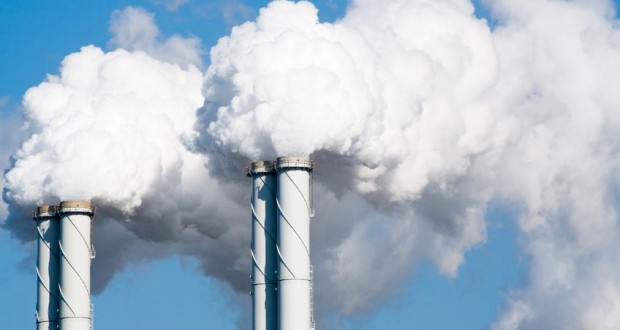Whether it is fears about global warming or persistent problems with smog, the environment seems to be an issue that’s always in the news. Arguably the biggest reason as to why the environment gets so much attention is its potential impact on human health. Prolonged exposure to various airborne pollutants can lead to serious and chronic medical conditions, including lung cancer and heart disease. In order to help Americans better understand the effects of air quality on health, the Environmental Protection Agency (EPA) has identified the six most common outdoor air pollutants.
Ozone – It may come as a bit of surprise to see ozone appear at the top of this list. After all, doesn’t the ozone layer shield us from the brunt of the sun’s rays? Well, yes, the ozone layer does indeed offer a blanket of protection from the ultra-powerful sun. However, this shouldn’t be taken to mean that this gas is safe to breathe.
Perhaps the characteristics of ozone are best summed up by the EPA-coined phrase “good up high, bad nearby.” In other words, ozone is very useful when it’s confined to stratosphere, a section of the atmosphere located between 6 and 30 miles from the earth’s surface. When occupying space in the troposphere (first six miles off the ground), the story becomes much different.
Ground-level ozone can inflict some serious damage to the lungs and throat. According the EPA, a person who inhales ozone may experience chest pain, throat irritation, congestion and bouts of coughing. Furthermore, those previously diagnosed with conditions such as bronchitis, emphysema and asthma could easily see worsening symptoms due to ozone exposure. People who live in areas with high levels of tropospheric ozone may eventually suffer lung tissue scarring.
Particulate Matter – Unlike other types of pollutants, particulate matter is not a singular substance. Rather, it is a nasty mix of numerous particles and liquid droplets. The harmful ingredients that help form this concoction include nitric acids, sulfuric acids, metals, organic chemicals, and various soil and dust particles.
When it comes to particulate matter, smaller particles tend to pose more of a threat to the body than their larger counterparts. The small size of such particles allows them to press deep into the lungs, and in same cases reach the bloodstream. On its website, the EPA notes that much evidence has linked inhaled particulate matter the following health problems:
- Premature death in people with heart or lung disease
- Nonfatal heart attacks
- Irregular heartbeat
- Aggravated asthma
- Decreased lung function
- Increased respiratory symptoms, such as irritation of the airways, coughing or difficulty breathing.
The groups most susceptible to the reach of particulate matter include young children, older adults and those with preexisting heart and lung conditions.
Nitrogen Dioxide – Nitrogen dioxide, a toxic gas with a reddish-brown tinge, can be traced back to the emissions released by such as cars, trucks, buses and power plants. If it makes it into the body, nitrogen dioxide may inflame the tissues lining the respiratory system. This pollutant can also aggravate asthma symptoms.
Carbon Monoxide – Aside from ozone, carbon monoxide might be the most well-known substance on this list. Carbon monoxide, often abbreviated as CO, is an exceptionally stealthy opponent, as it has no taste, smell or color. Consequentially, it can be incredibly difficult to detect.
Carbon monoxide interferes with the body’s ability to supply its organs with oxygen. Specifically, CO reduces the amount of oxygen that can be transported via the bloodstream. People with heart disease, an ailment that likewise restricts the delivery of oxygen to the heart, can be especially vulnerable to the effects of carbon monoxide. Headaches, drowsiness and nausea are among the most common symptoms of carbon monoxide exposure. Inhaling a large amount of carbon monoxide can be fatal.
Sulfur Dioxide – Unlike carbon monoxide, sulfur dioxide carries along a putrid smell that follows it wherever it goes. Fossil fuels like oil and coal release sulfur during the combustion process (the term “combustion” simply refers to when fossil fuels are burned). Because of this fact, power plants and industrial facilities are by far the biggest producers of this colorless gas.
Those unlucky enough to inhale sulfur dioxide often have difficulty breathing, and may also struggle with taking deep breaths. In addition, patients often feel a burning sensation in both the nose and throat. Asthmatics and people with heart disease can have especially bad reactions to sulfur dioxide, along with children and the elderly.
Lead – Lead, a soft and dense type of metal, has been used by various civilizations for thousands of years. Today, lead is still used to make items like batteries and certain roofing materials. Unfortunately, lead has a dark side, as it can inflict major damage throughout the body. Inhaling lead (or ingesting it via contaminated food and water) can damage the cardiovascular, nervous and immune systems. The kidneys may also be adversely affected.
On a nationwide basis, the biggest producers of airborne lead are metal processing plants and piston-engine aircraft running on leaded aviation fuel. Lead can also work its way into drinking water through corroding lead pipes.
 Natural Knowledge 24/7 Educate yourself with nutrition, health and fitness knowledge.
Natural Knowledge 24/7 Educate yourself with nutrition, health and fitness knowledge.






